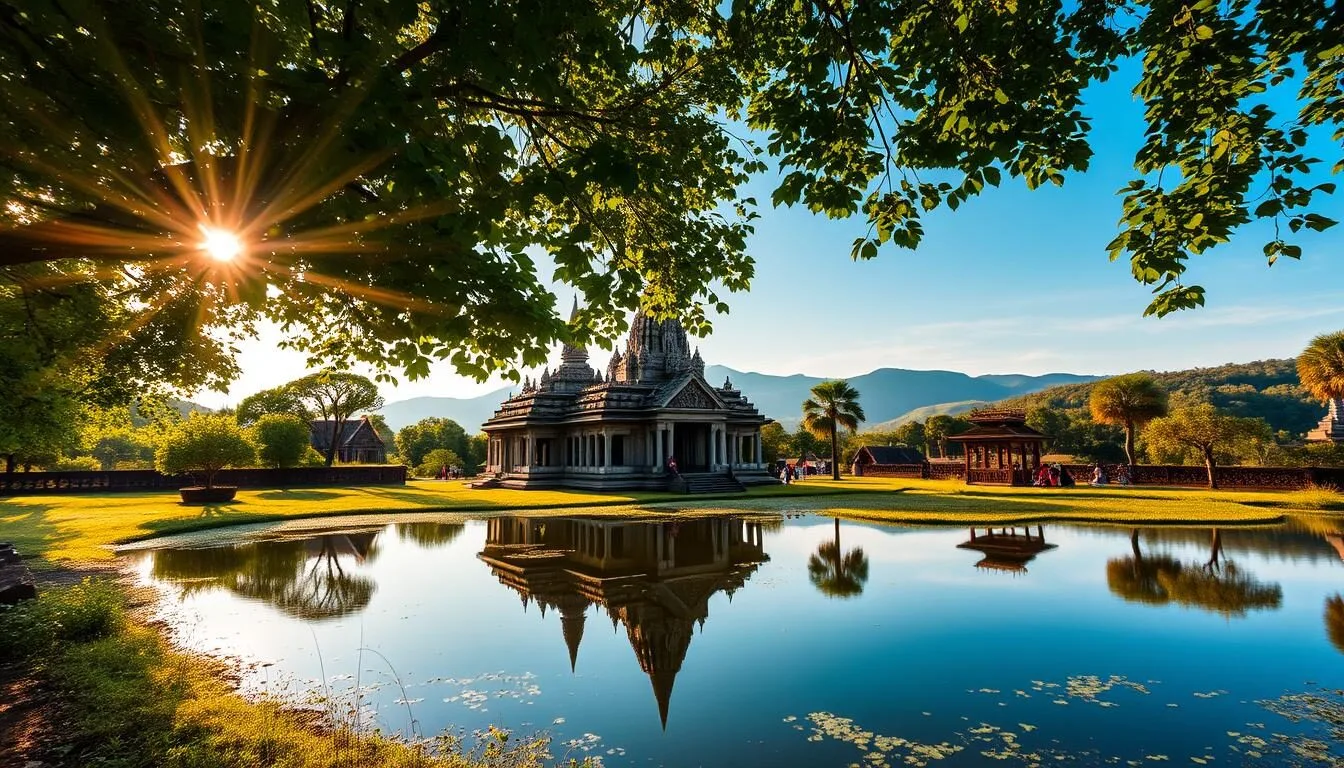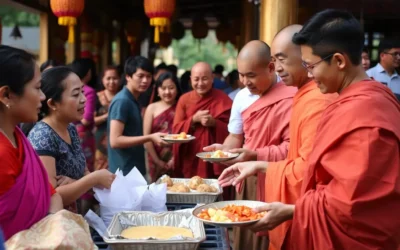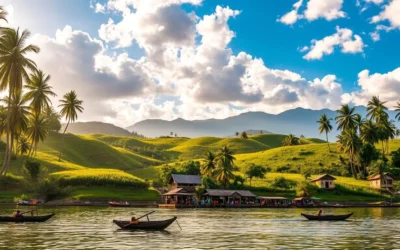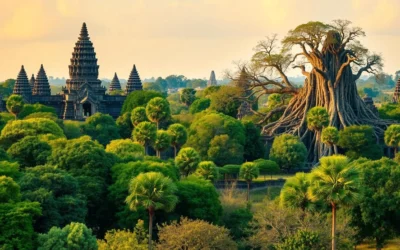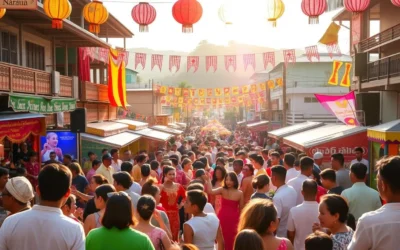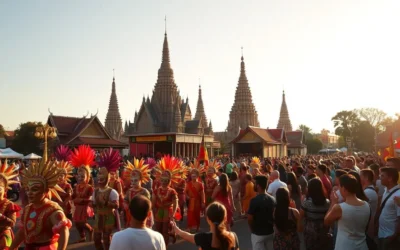✓ Accommodations✓ Flights✓ Rental Cars
Imagine visiting a province that’s home to some of Cambodia’s oldest archaeological sites, where rich history comes alive. Takeo province, located in southern Cambodia, is a hidden gem that offers a unique blend of ancient temples, cultural heritage, and authentic local life experiences.
As you plan your trip to this historically significant region, you’ll uncover the secrets of Takeo province‘s pre-Angkorian past. With its scenic landscapes and cultural attractions, visiting Takeo is an unforgettable experience that will leave you with a deeper understanding of Cambodia’s rich history.
Discovering Takeo: Cambodia’s Cradle of Civilization
As you step into Takeo province, you’re walking into the heart of Cambodia’s rich historical heritage. Takeo is a small lowland province with various historical sites and is a fine base for archeological excavations.
Location and Significance
Takeo province is situated in the south of Cambodia, covering an area of 3,563 square kilometers. It is nestled between Kandal, Kompong Spue, and Kampot provinces and Vietnam, making it an accessible destination for travelers. The strategic location of Takeo province has played a significant role in shaping its history and cultural development.
The province is known as the “cradle of Cambodian civilization” due to its significance in the country’s rich history. It is home to some of the earliest Khmer settlements, providing valuable insights into the evolution of Khmer culture and architecture.
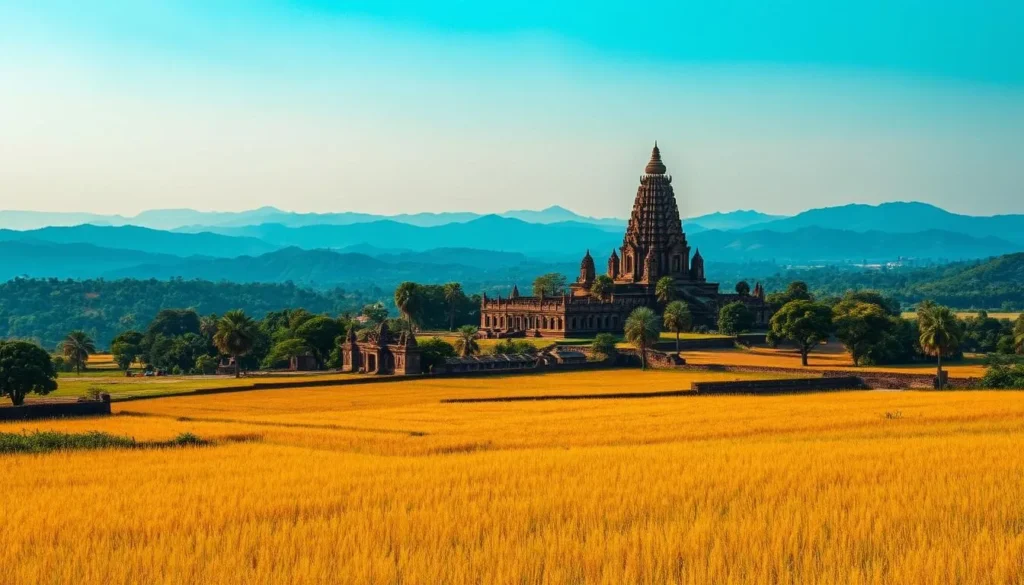
Rich Historical Background
Takeo province has a rich historical background that spans various time periods, from the Funan Kingdom to the present day. The province is a treasure trove for historians studying pre-Angkorian architecture and cultural development. You can explore the ancient temples and archaeological sites, such as Phnom Da and Phnom Chisor, to learn about the evolution of Takeo through different periods.
| Historical Period | Significant Events | Cultural Developments |
|---|---|---|
| Funan Kingdom | Establishment of early Khmer settlements | Development of pre-Angkorian architecture |
| Angkorian Period | Construction of temples such as Phnom Da | Evolution of Khmer art and culture |
Best Time to Visit Takeo, Cambodia
Understanding the best time to visit Takeo, Cambodia, is crucial for a memorable trip. The province experiences a tropical climate with distinct wet and dry seasons, each offering a unique experience.
Dry Season (November to April)
The dry season is considered the best time to visit Takeo, with comfortable weather conditions. From November to February, the temperatures are pleasant, making it ideal for exploring historical sites. As the season progresses into March and April, it becomes hotter, with temperatures potentially reaching 35°C or higher.
- Pleasant temperatures from November to February
- Hotter conditions in March and April
Wet Season (May to October)
The wet season brings heavy rainfall and higher humidity, especially from June to September. While this can affect accessibility to some sites, the landscape becomes lush and green, offering a different kind of beauty.
- Heavy rainfall from June to September
- Lush green landscapes and filled water basins
Considering these seasons, the best time to visit Takeo is from November to February, when the weather is cooler and drier. If you’re planning to visit multiple temples and archaeological sites, the dry season is the most suitable.
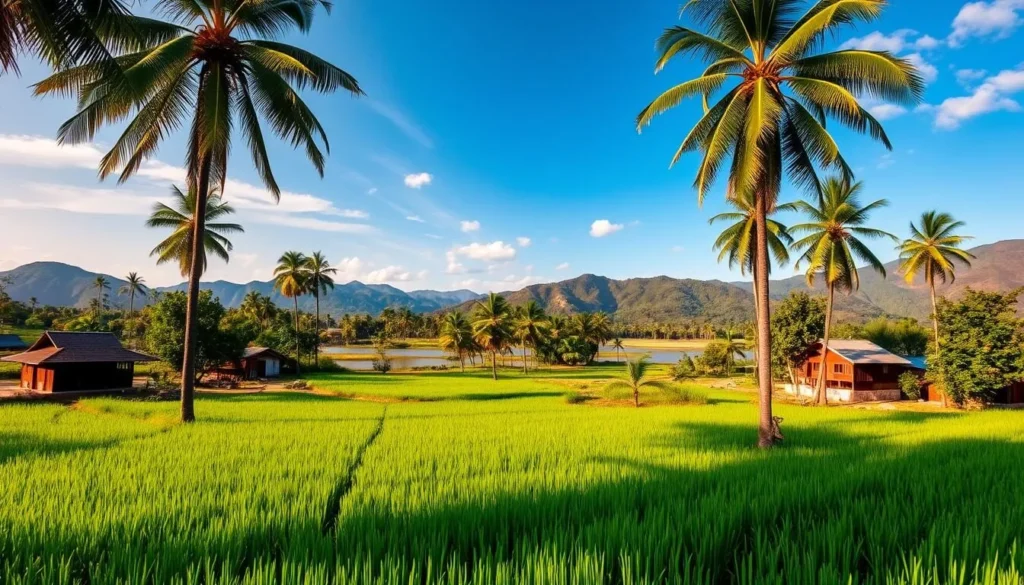
Top Historical Attractions in Takeo
As you explore Takeo, you’ll discover a wealth of historical sites that are sure to captivate your imagination. Takeo is home to numerous ancient temples and historical attractions that provide a glimpse into Cambodia’s rich cultural heritage.
Phnom Da Temple
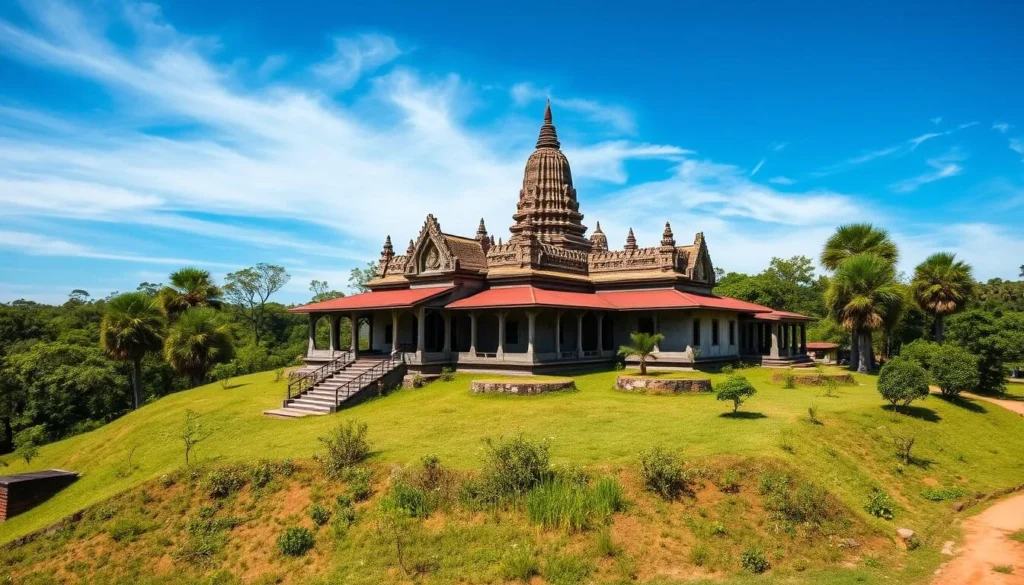
Phnom Da Temple, located about 24 kilometers east of Takeo town, is one of Cambodia’s oldest historical sites. You can immerse yourself in ancient Khmer history by exploring this cultural and historical site, which has been renovated to provide visitors with a place to relax or research Cambodian history.
Phnom Chisor
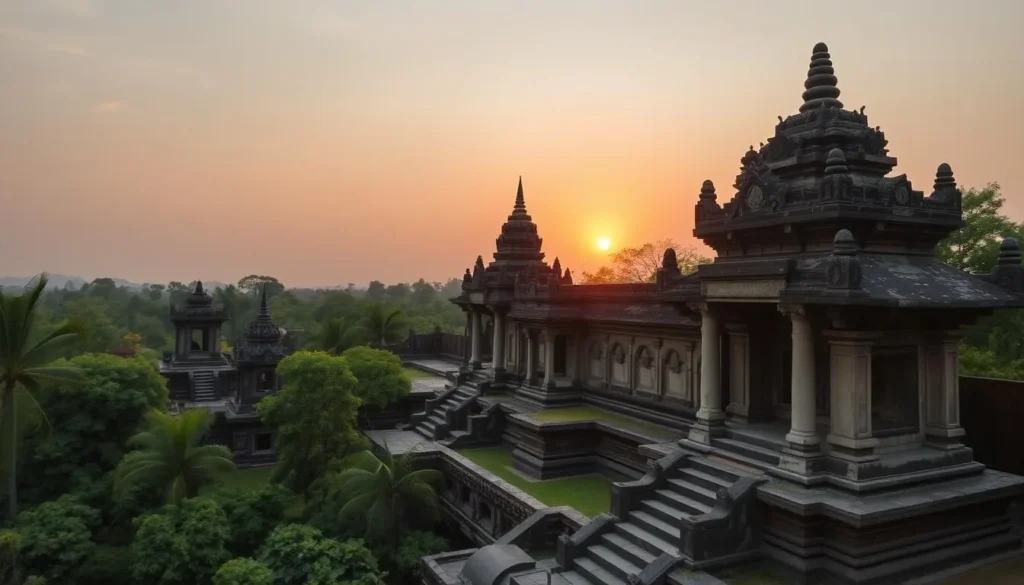
The Phnom Chisor temple complex is an impressive historical site dating back to the 11th century. Featuring well-preserved ruins with intricate carvings that showcase the blend of Hindu and Buddhist architectural influences, this site is a must-visit. Climbing the steep stairway to reach Phnom Chisor’s hilltop location rewards visitors with breathtaking panoramic views of the surrounding countryside and rice fields.
Ta Prohm Temple
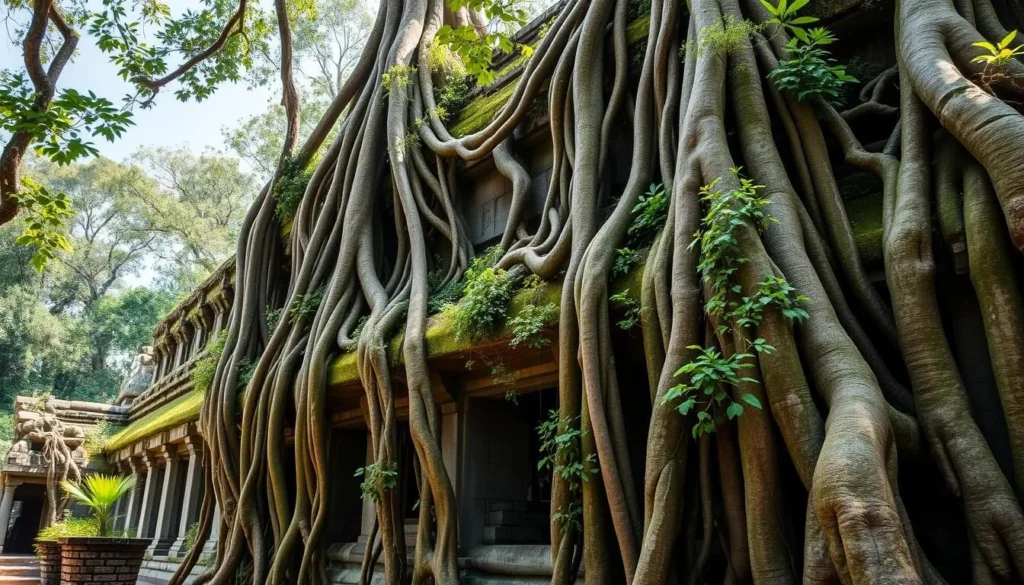
Ta Prohm Temple is a 12th-century marvel where nature and history come together as tree roots embrace ancient stone structures, creating a mystical atmosphere. You can wander through the temple’s ruins and marvel at the intricate stone carvings and architecture that have been partially consumed by the surrounding jungle.
Prasart Neang Khmao

Prasart Neang Khmao, or the Black Virgin Mountain, is a sacred and historically significant site. This temple complex features several ancient structures, including a central sanctuary. Climbing to the top of the hill where Prasart Neang Khmao is situated offers panoramic views of the surrounding countryside, making it a rewarding experience.
These historical attractions in Takeo not only showcase the province’s rich history but also provide insights into the development of Khmer civilization. By visiting these sites, you can learn about the historical significance of the temples and their representation of different periods in Cambodia’s architectural and religious evolution.
Must-Visit Natural and Cultural Sites in Takeo
Takeo is more than just a province; it’s an experience that combines natural beauty, history, and local culture. As you explore this region, you’ll discover a variety of sites that showcase the best of what Takeo has to offer.
Tonle Bati Lake
Tonle Bati Lake is a serene spot in Takeo Province, Cambodia, known for its picturesque surroundings and historical temples. You can relax by the water, have a picnic, or rent a small boat for a leisurely paddle on the lake.
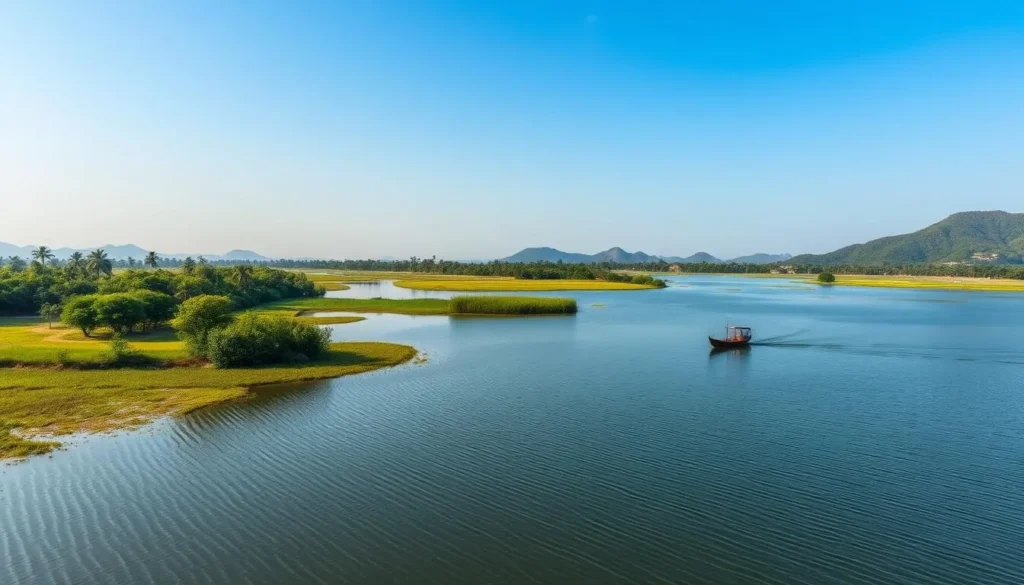
Angkor Borei Archaeological Site
Angkor Borei is a town in Takeo province that offers a fascinating glimpse into the region’s rich history. You’ll need to take a 30-minute boat trip to get to Angkor Borei from Takeo, where you can explore the remains of ancient structures and artifacts from the Funan period.
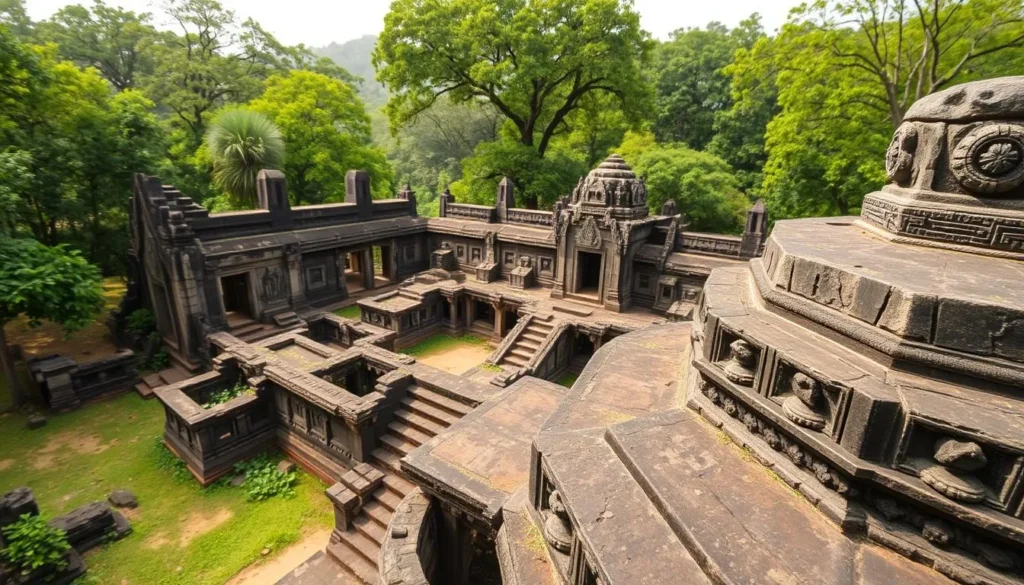
Phnom Ta Mao Zoo
Phnom Ta Mao Zoo is Cambodia’s largest wildlife sanctuary, home to a wide variety of animals, including tigers, leopards, elephants, and various bird species. You can observe these animals in spacious enclosures designed to mimic their natural habitats.

Takeo Market
Takeo Market is a great place to experience local culture, where you can interact with friendly vendors, sample authentic Cambodian street food, and purchase handcrafted souvenirs. This market is an essential part of any trip to Takeo, offering a memorable experience.
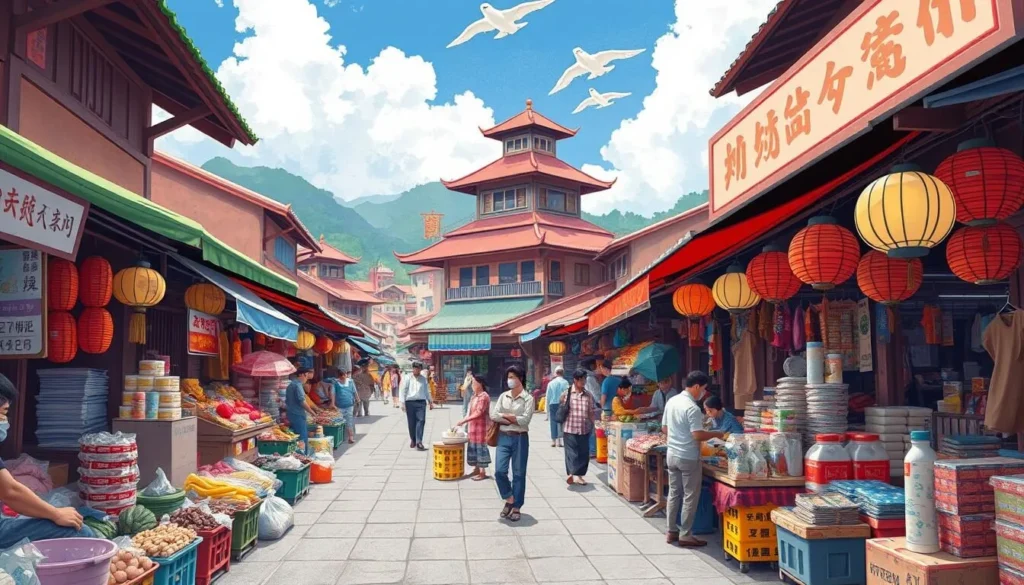
These diverse sites offer a complete experience of Takeo province, combining natural beauty, cultural immersion, and historical exploration in one accessible area. Whether you’re looking for a relaxing trip or an enriching cultural experience, Takeo has something for everyone.
Practical Travel Information for Takeo
To make the most of your visit to Takeo, understanding the practical aspects of traveling there is essential. Whether you’re planning a day trip or a longer stay, having the right information will enhance your experience.
How to Get to Takeo
Getting to Takeo is relatively straightforward, with buses from Phnom Penh being the most common mode of transportation. National Highway No.2 links Phnom Penh and Takeo province, ensuring a smooth journey.
Where to Stay in Takeo
Takeo offers a range of accommodation options to suit different preferences and budgets. The Alice Villa Hotel is a popular choice, featuring a garden and air-conditioned rooms with garden views. It’s located 700m from Roka Khnong Lake and 1 km from Takeo Market.
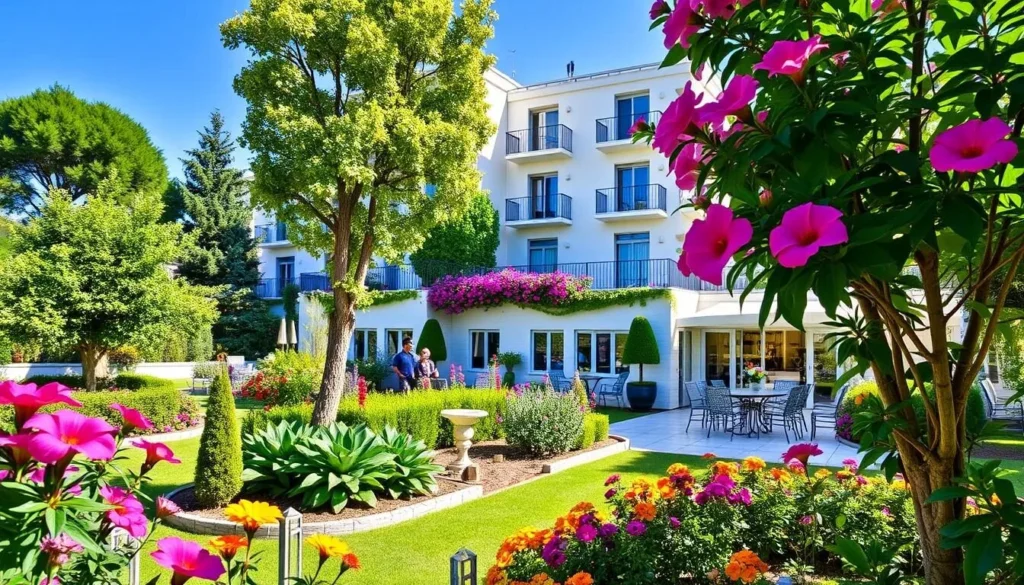
Other options include the centrally-located Daunkeo Guesthouse and the Meas Family Homestay, which offers a glimpse into local village life.
Local Cuisine and Dining Options
Takeo is known for its traditional Khmer dishes, and you can experience the local cuisine at establishments like Stung Takeo Restaurant. Be sure to try the regional specialties that reflect the province’s agricultural heritage.
When planning your trip, consider allocating enough time to explore Takeo’s attractions, including Takeo Market, where you can observe daily life and interact with locals. Hiring a local guide can also enhance your experience, especially if you’re interested in the historical and archaeological aspects of the province.
Conclusion: Why Takeo Deserves a Spot on Your Cambodia Itinerary
As you plan your trip to Cambodia, consider adding Takeo province to your itinerary for an authentic cultural experience. Takeo offers a unique glimpse into Cambodian history and culture without the crowds that flock to more famous attractions like Angkor Wat.
The diverse attractions in Takeo provide something for every traveler, from ancient temples and archaeological sites to natural landscapes and opportunities to experience local life. By visiting Takeo, you’re supporting a less-traveled region while gaining insights into the foundations of Cambodian civilization.
Use this guide to plan your time in Takeo, prioritize attractions, and navigate this charming province. Takeo is a great spot for travelers seeking an authentic experience, making it a valuable addition to your Cambodia travel guide.
The above is subject to change.
Check back often to TRAVEL.COM for the latest travel tips and deals.
